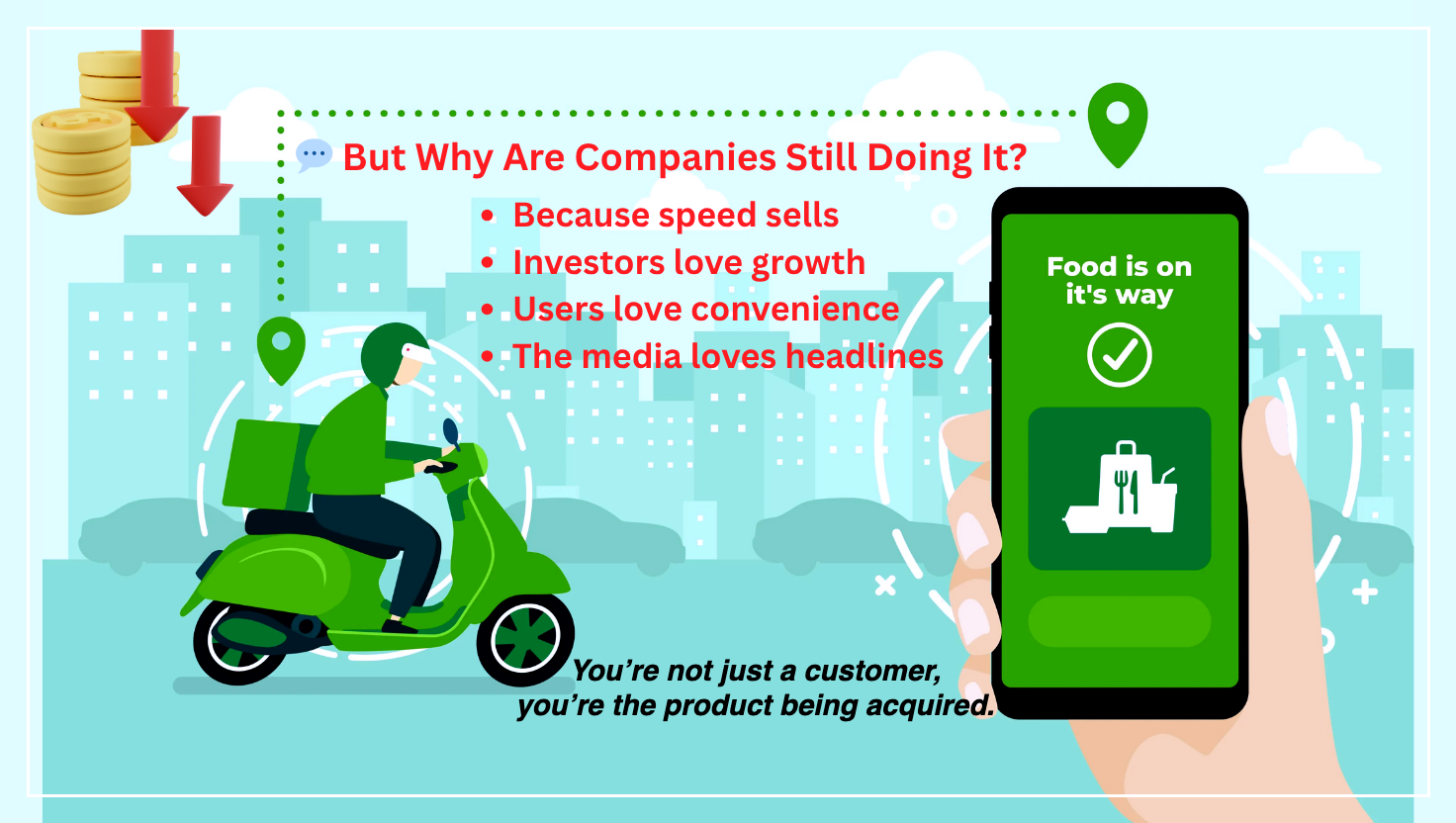The Secret Cost of 10-Minute Delivery Apps
Blinkit, Zepto, and Swiggy Instamart promise 10-minute deliveries. But behind that promise lies a hidden cost — one that someone always pays. Here’s the truth no ad will tell you. #Blinkit #Zepto #SwiggyInstamart #DeliveryEconomy #GigWorkers #BusinessModel #Sustainability

🚀 The Rise of the “Instant” Economy
India’s metros are racing — and so are deliveries. A decade ago, we waited three days for an online order. Now, groceries arrive before your movie ends. Blinkit, Zepto, and Swiggy Instamart turned “instant” into a lifestyle.
But this speed isn’t free. Every 10-minute order costs more than you think — not just in money, but in human effort, fuel, and sustainability.
The Business Math — Who Pays for That ₹10 Delivery?
When you order a ₹250 grocery pack, here’s what really happens behind the scenes (approximation from industry reports):
| Cost Element | Average Cost (₹) | Who Pays / Loses |
|---|---|---|
| Rider Payment (per delivery) | ₹25–₹30 | Company partially reimburses |
| Packaging + Handling | ₹6–₹8 | Company |
| Dark Store Rent + Staff | ₹5–₹10 | Company |
| Fuel (rider borne) | ₹10–₹15 | Rider |
| Platform & Tech Overheads | ₹5 | Company |
| Delivery Fee Charged to You | ₹10–₹20 | You |
| Net Company Loss (per order) | ₹20–₹40 | Company (for growth) |
So while you celebrate “instant,” the company loses ₹20–₹40 per order to grab market share — and the rider often spends part of his own income to meet targets.
🧍 The Human Side — Delivery Partners’ Reality
Meet Rohit, a delivery partner from Gurugram. He works 12-hour shifts, completes 20–25 orders, and earns ₹800–₹1,000 on a good day — but that’s before petrol and maintenance.
After deductions:
- Petrol: ₹250/day
- Platform commission cuts: ₹100–₹150
- Occasional penalties (late deliveries, order rejection): ₹50–₹100
👉 Net takeaway: ₹500–₹600 for 10–12 hours of physical work.
That’s below minimum wage in some cities.
The “Dark Store” Game
To make deliveries this fast, companies run micro-warehouses or “dark stores” every 2–3 km.
Each one costs ₹1–₹2 lakh/month in rent, staff, and utilities.
Margins vanish, but the goal isn’t profit — it’s habit-building.
When millions of people get used to ordering onions and milk online, the company owns the customer. Later, they’ll sell ads, premium subscriptions, or partner with brands to make real money.
So yes — you’re not just a customer, you’re the product being acquired.
🔋 Environmental & Social Costs
The 10-minute race also burns fuel, increases traffic risk, and adds pressure on riders to skip safety.
- 1 delivery = ~0.25 litres of petrol = ~600 g CO₂ emissions.
- Multiply by millions of daily orders — that’s an invisible environmental bill.
- Accidents among gig-workers in metros are increasing, according to several news reports.
💬 But Why Are Companies Still Doing It?
Because speed sells.
Investors love growth, users love convenience, and the media loves headlines.
Blinkit’s parent Zomato reported its first operating profit in Q4 FY 2025, driven by high-margin categories like electronics and beauty. But the core grocery delivery business is still loss-making — subsidized by scale and venture money.
In other words: profits may come later, but market capture comes first.
💡 The Smarter Consumer Choice
You don’t need to boycott fast delivery — just use it mindfully.
- Plan weekly groceries; use 10-minute delivery only for emergencies.
- Tip your rider — it makes a real difference.
- Choose “standard delivery” when possible to reduce pressure.
- Support local kirana stores — they’ve been delivering long before apps existed.
❤️ Final Thought
Convenience is beautiful — until someone else pays the cost for it.
The next time your order arrives before the rain stops, remember: behind that speed is a story of human effort, investor risk, and urban demand that never slows down.
⚠️ Disclaimer
This article is for educational and awareness purposes only. The numbers and estimates are based on publicly available data and industry analysis. They may vary across cities and time.
